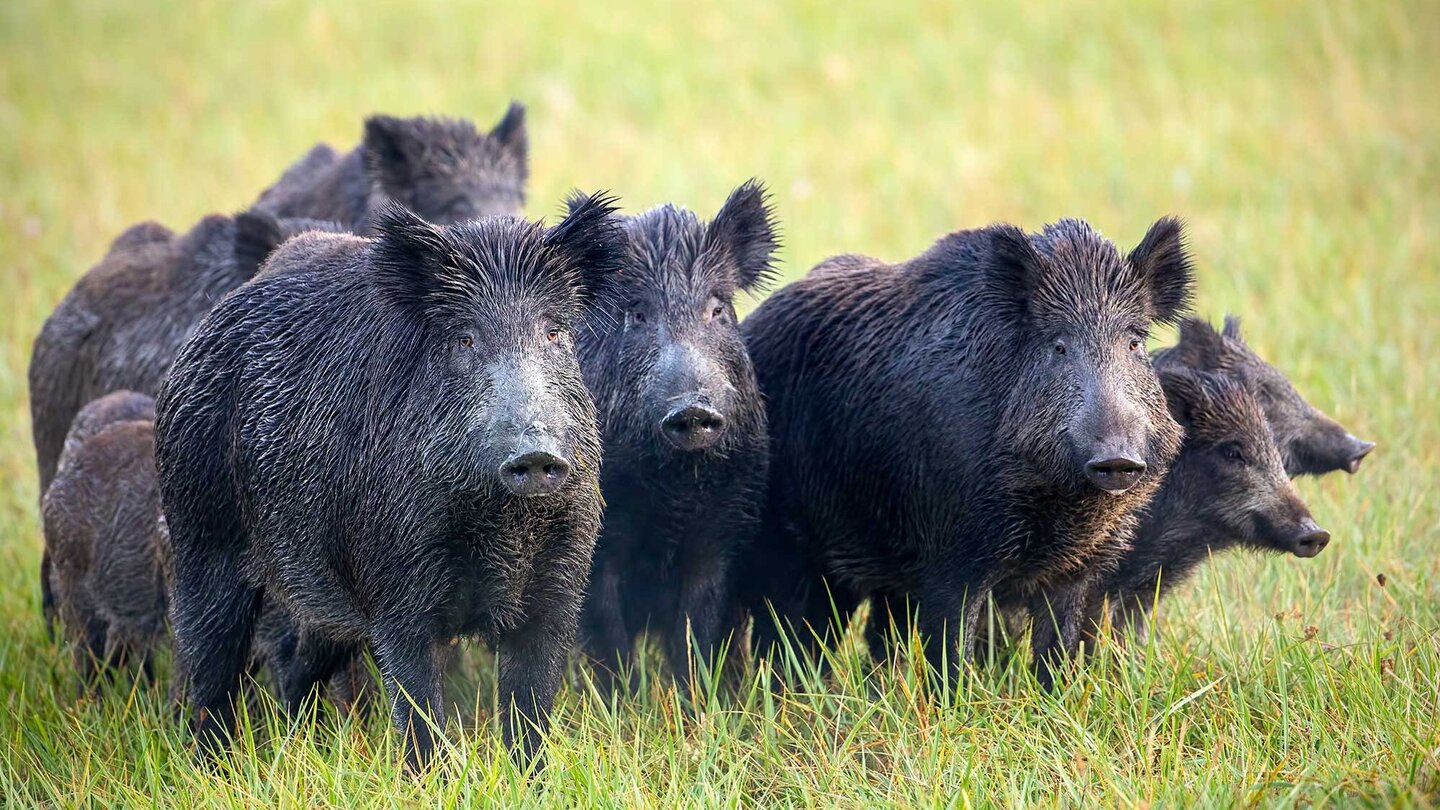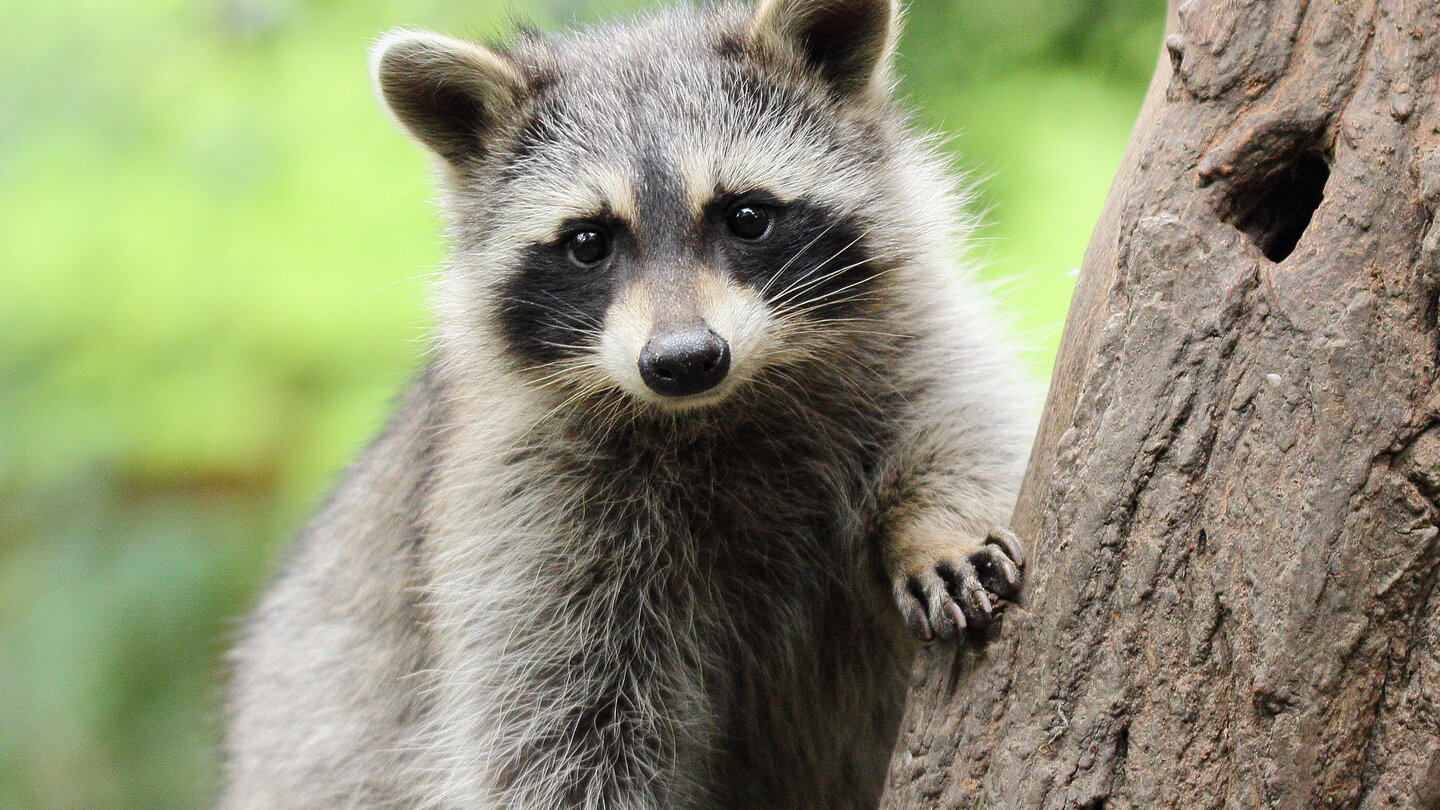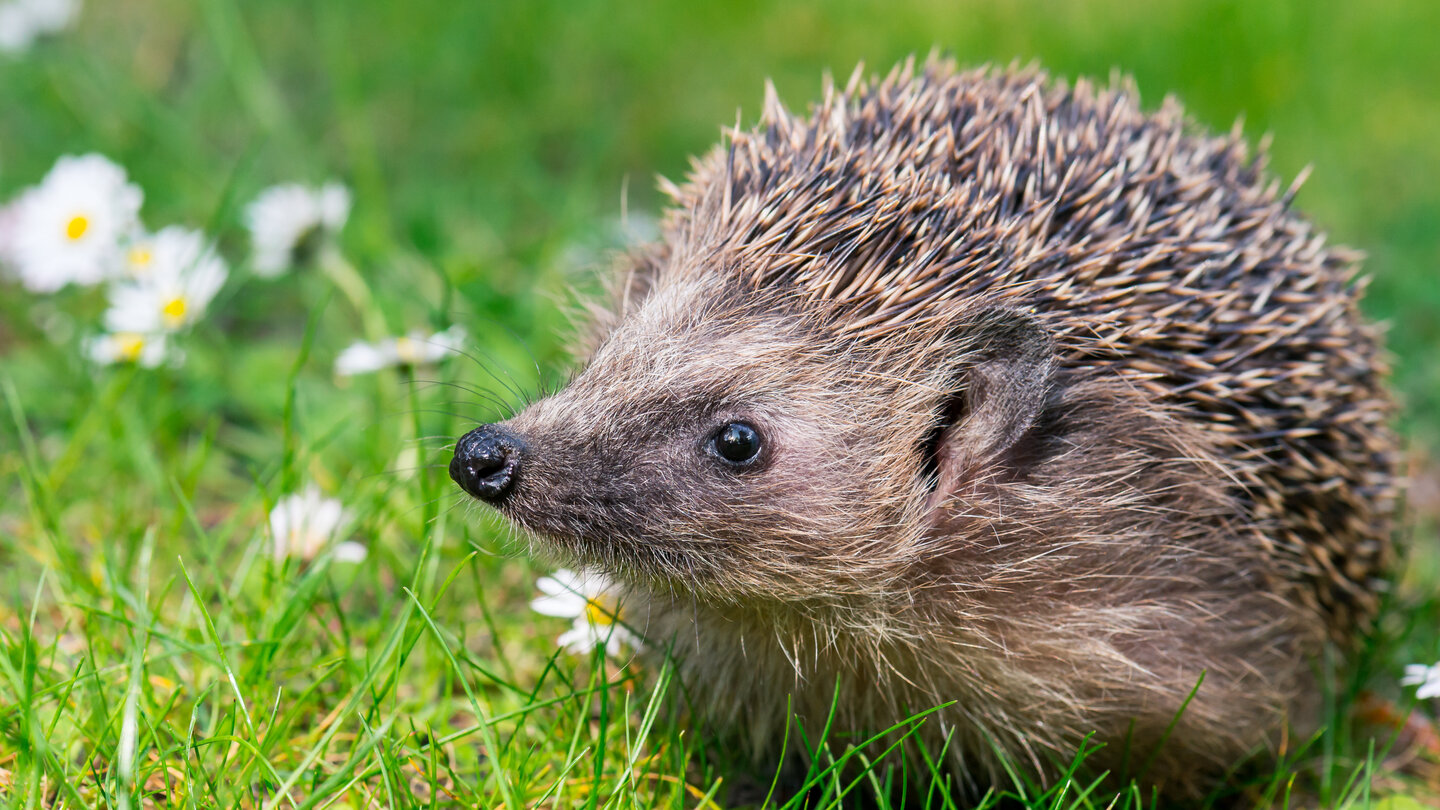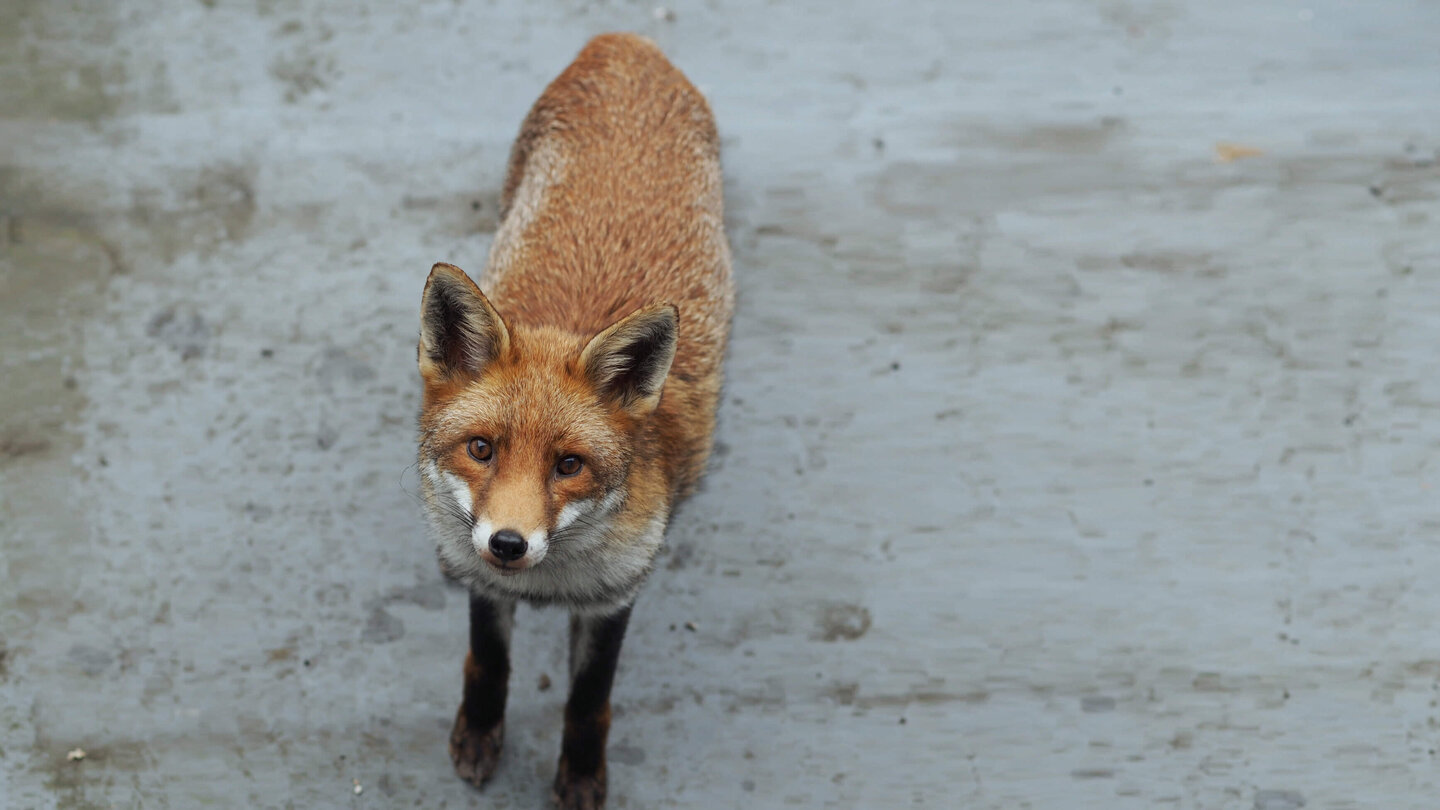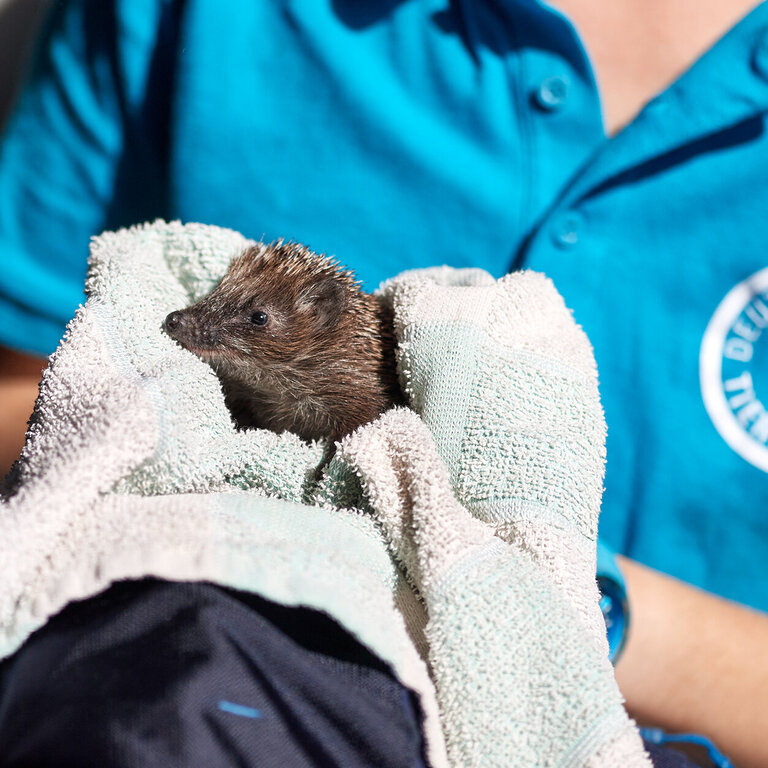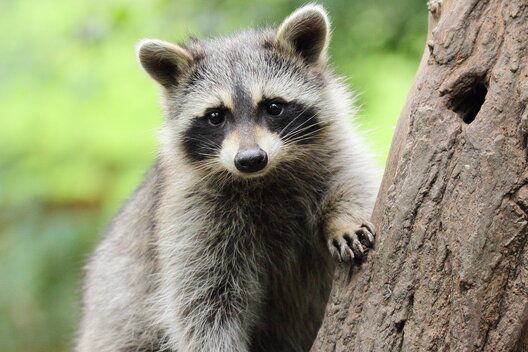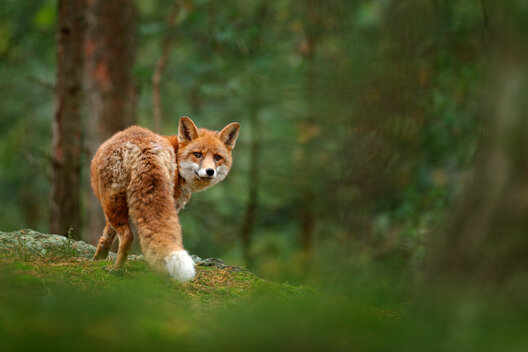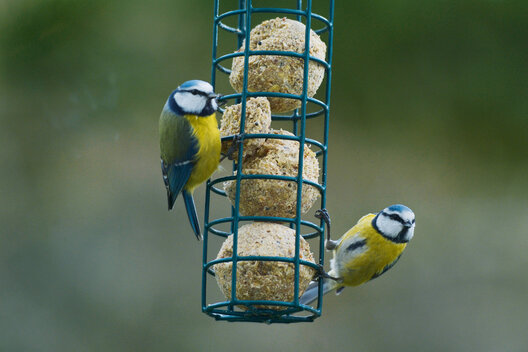Raccoon, fox and co. as neighbors: What you should knowWild animals conquer the city
More and more wild animals are living in the city. In addition to the obvious city dwellers such as wild rabbits or squirrels, we also encounter raccoonsraccoons, wild boars, bats, stone martens and foxes. They find food and shelter in the city. In order for them to find their way around the urban environment and avoid conflicts with humans, we need to be considerate of them.
Wild animals have been living in large numbers in our cities for decades. We are noticing them more and more often - partly because we are enclosing them with our urban development. It is now not uncommon to see raccoons climbing walls, wild boars walking through gardens or a fox hunting mice in the neighborhood. We humans have caused this unusual proximity ourselves. On the one hand, because our cities are constantly growing. This destroys the natural habitats of wild animals. Remaining retreat areas are mostly managed by humans and are therefore no longer genuine natural landscapes. Secondly, many cities provide a rich food supply for many wild animals.
Cities offer wild animals safety and warmthWhy more and more wild animals are living in the city
- Wild animals find plenty of food in the city in the form of food, food scraps or compost and crops. Not only do they benefit from a "richer buffet" here, but often also from more fertile soils that are not as over-fertilized as in some rural areas, increased biodiversity and the variety of useful plants.
- Cities offer wildlife plenty of shelter and newly created habitats. Many animal species can adapt well to the conditions of urban life. In addition, many of them are less hunted between residential and commercial areas and can often find mating partners more easily.
- Many cities have warmer temperatures than rural areas. This is an advantage for some wild animals, which prefer milder winters in particular.
It is therefore not surprising that wild animals feel at home even in metropolitan areas such as Berlin. Over 40 percent of the city consists of green spaces and water areas. For example, nine times more hedgehogs live in the capital than in the surrounding area. Almost all local bat species can also be found there, while the number and diversity of birds in cemeteries is particularly high.
Wild boars feel right at home in gardens
Wild boars adapt to urban life, especially in garden-rich suburbs. In their search for food, wild boars, which usually appear in groups, so-called packs, rummage through the ground, often leaving not much grass behind. This is the best way for them to reach roots, worms, grubs, snails and flower bulbs, but they sometimes leave the meadows looking as if they have been plowed up.
Fear of foxes is unfounded
Foxes are also drawn to cities. In Cologne alone, for example, there are estimated to be more than 1,000 of them. This diversity of species in the city makes many people uneasy. Some people are particularly skeptical about foxes, for example because they fear that the animals could have rabies if they are in our vicinity and cannot be chased away. However, Germany has actually been rabies-free for many years. This also applies to raccoons, squirrels and the like!
How living together works
Caution and respectful behavior are advisable, but fear is not necessary. It is more important that we learn to live harmoniously with wild animals in cities. After all, they are now part of the cityscape, have adapted well to this habitat, have the right to live there and most populations generally remain stable. It is up to us to maintain this neighborhood with as little conflict as possible.
What you can doChecklist: Wildlife in the city
- Do not feed
In large cities, wild boars, raccoons and foxes can become quite shy of humans, especially if they are fed. You should therefore strictly refrain from doing so. If you feed birds privately in the garden or on the balcony, make sure you remove any fallen food and offer the bird food in such a way that other animal species cannot reach it. - Stow waste safely
To prevent wild animals such as raccoons, wild boars, stone martens, corvids, rats and other animal guests from being tempted in the first place, waste should be inaccessible to them. Therefore, do not compost any leftover food, for example, only place bin bags on the street shortly before collection and, if possible, close garbage cans. - Keep calm
Larger animal species such as foxes and wild boars in particular frighten people. However, they are not generally aggressive, but rather shy. However, if they become accustomed to humans through feeding or feel disturbed and want to protect their young, for example, the animals can become uncomfortable for humans or dogs. When encountering animals, you should therefore not make any hectic movements, ignore the animals as much as possible depending on the species and then move away slowly. Dogs should be kept on a lead in areas where wild animals may be encountered during walks. - Drive slowly
Unfortunately, collisions with wild animals can also occur in road traffic. Especially at dusk and on routes through forests and fields or urban areas where wild animals live, you should drive particularly carefully and adjust your speed. Turning on the high beam can be rather dangerous. The bright light can confuse the animals and deprive them of any means of orientation. - Secure houses
Raccoons and stone martens can sometimes use houses as shelters. They are excellent climbers and quickly find weak points in roof tiles and loose masonry. It therefore helps to prevent them from climbing onto the roof. For example, cut back any trees that are close to the house and thus make it easier for them to gain access to the roof. Block off access points with metal grilles or block cat flaps at night. - Ask experts
In larger cities, there are usually wildlife telephones and contact points for wildlife biologists, NABU and other institutions that you can ask for help and from whom you should seek advice before taking measures in your home and garden.
Our demands
This requires, for example, more green spaces, green roofs and façades, nesting opportunities, wildlife-friendly gardens, watering holes and flower strips. At the same time, we need to protect their natural habitats and prevent them from becoming ever smaller.
- Large glass surfaces are particularly dangerous for birds. This needs to be prevented technically, as do traps for amphibians and small mammalsunnecessary and extensive lighting, which disturbs the rhythm and orientation of wild animals at nightand gravel gardens where they can find neither shelter nor food.
This includes various measures such as improved waste management in private homes and public places. Limiting food sources, educating the public, strict feeding bans, better barriers such as more professional protection of gutters and roofs against martens, wire mesh to protect plants from wild rabbits and speed limits in green areas with high wildlife traffic can also help to make it easier for people and wild animals to live together in cities.


